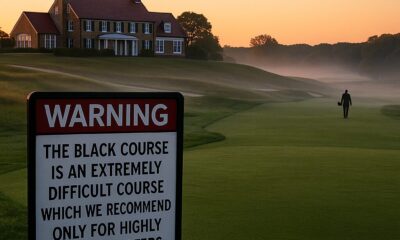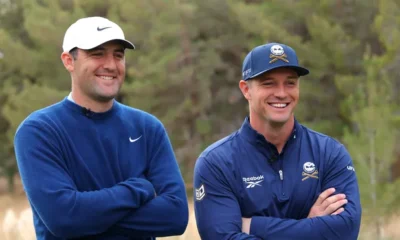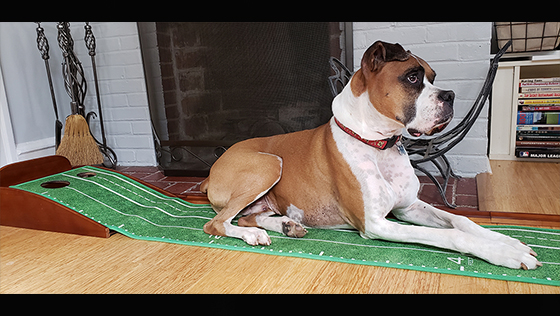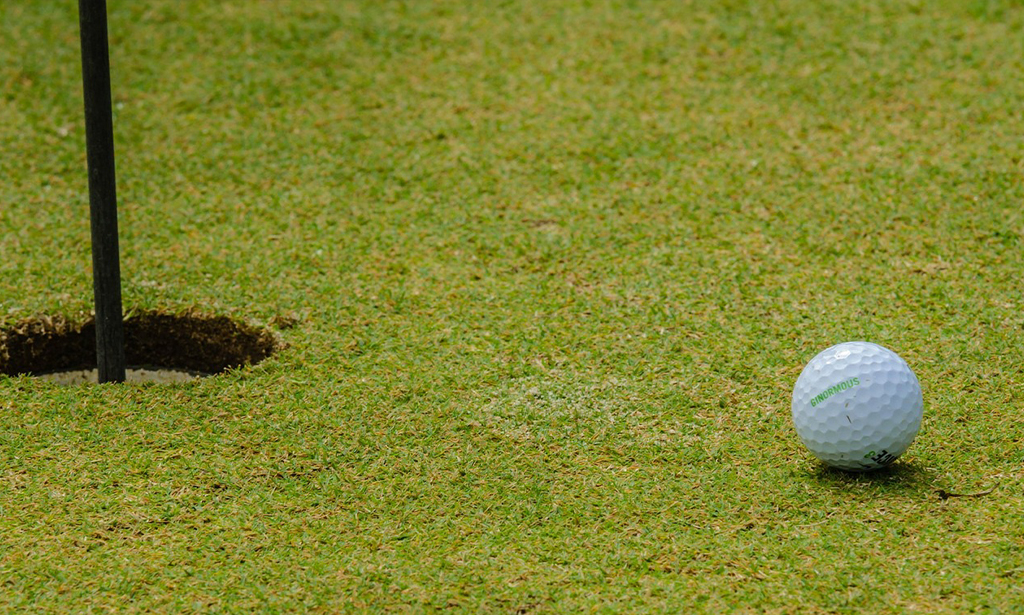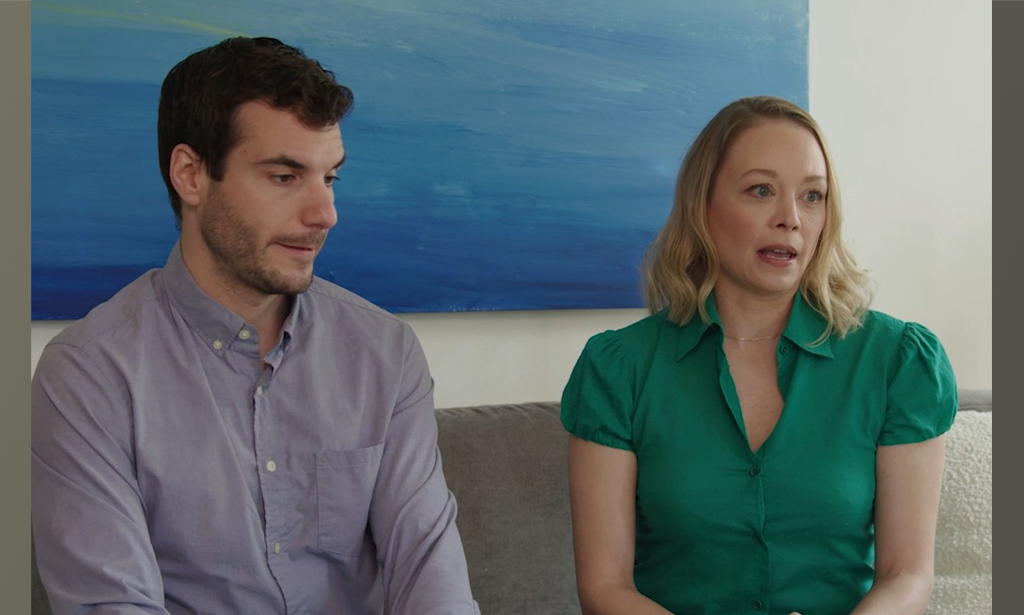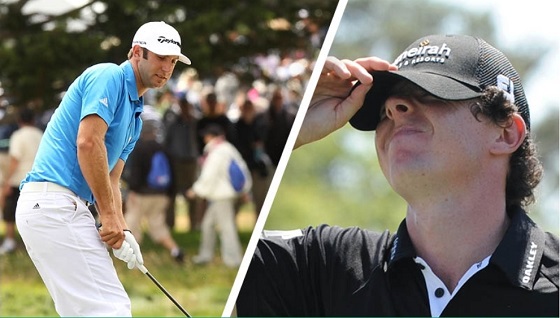Blog
Houston Open 2021 Expert Picks to Win
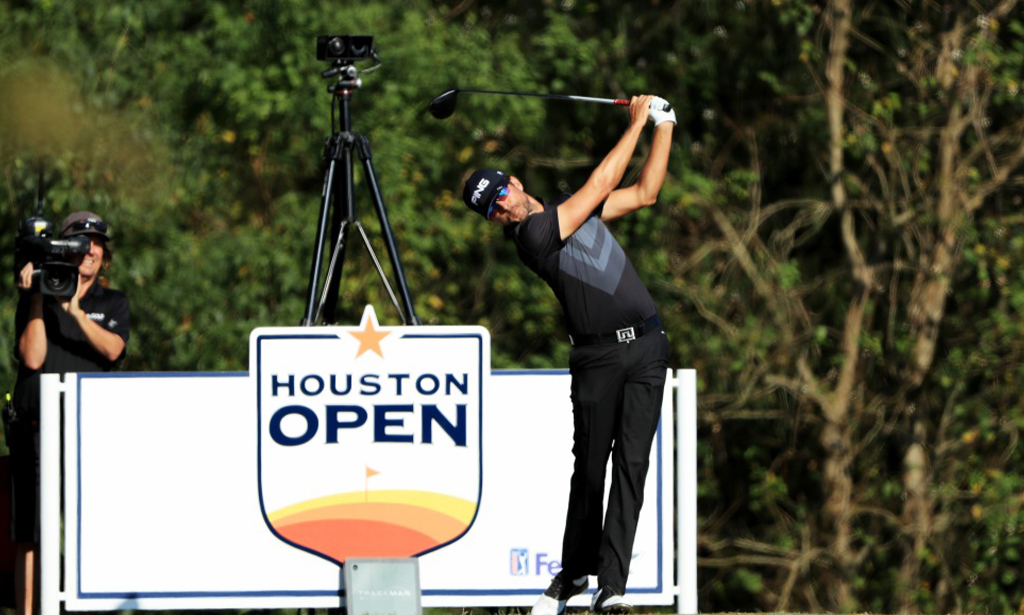
Another week, another Fall Swing winner from the Golf Digest expert picks column, with both Rick Gehman and Brandon Gdula hitting on Viktor Hovland’s title defense at 19-1 in Mayakoba. Picking up right where we left off in 2020-’21. Not to brag.
This week, we like our chances again, even with just one year of course history at second-year Houston Open host venue Memorial Park. Not sure if you’ve heard, but Brooks Koepka did have a little bit of input on the massive renovation project, which was largely overseen by Tom Doak. It’s made Koepka anything but a sneaky play this week among the gambling community.
While Koepka deserves plenty of attention, there are a ton of intriguing names at the top of this week’s odds board, which the scorching-hot Sam Burns sits atop as the solo favorite. Scottie Scheffler, Cameron Smith, Sungjae Im, Talor Gooch, Matthew Wolff, Tyrrell Hatton and Tony Finau fill in the space between Burns and Koepka. Our experts aren’t straying too much further down the board, because if the Fall Swing has shown us anything it’s that elite players usually win golf tournaments.

Houston Open 2021 picks: Outright Predictions
Anonymous Caddie Picker of the week: Sam Burns (12-1, DraftKings) — It’s crazy to think four-time major champ Brooks Koepka is double the odds of Sam Burns. But Burns has really put on tee-to-green exhibitions all year. He doesn’t get enough credit. He got the win at Sanderson, and I could absolutely see him winning again. He’s motivated to be a star.
Pat Mayo, DraftKings/Fantasy National, Mayo Media Network analyst: Brooks Koepka (28-1, DraftKings) — Forget all that business about him helping redesign the course, that matters not. What matters is that you’re getting the best player in the field at 28-1. Sure, he’s been playing like trash, but this is really no different than his horrendous play before winning in Phoenix in February. And, in the outright betting market, there’s no difference between second place and a missed cut. Go with the guy who churns out those firsts at the highest rate in the field.
Brandon Gdula, FanDuel/numberFire managing editor: Cameron Smith (23-1, FanDuel) — Last year, we saw Memorial Park reward those with great wedge play, and that sets up well for Cam Smith. He’s my win simulation model’s most likely winner but isn’t listed as a betting favorite; there’s value here. The course played moderately tough a year ago, and Smith has a combination of birdie ability and bogey avoidance.
Rick Gehman, data scientist and RickRunGood.com founder: Russell Henley (45-1, DraftKings) — Are there better players in the field? Absolutely. Are there better players at better prices? Probably not. Memorial Park will be stout, checking in at 7,400 yards as a par 70—but that shouldn’t intimidate Henley. He’s made 13 starts in his career on par 70s that are at least 7,250 yards. He’s gained strokes on the field in every start and has four top-10 finishes. His 1.31 strokes gained per round is second to only Koepka of golfers in this field who have played at least 40 rounds under those conditions, per the RickRunGood.com golf database.
Stephen Hennessey, Golf Digest dep. managing editor: Joaquin Niemann (30-1, PointsBet) — It’s tough coming off a few ShotLink-less weeks—we’re flying a little blind without the data. What we do know is Niemann’s playing some great golf this year, with runners-up at Rocket Mortgage and the Sony Open. And he finished fifth after a hot Sunday at Mayakoba. I just think Niemann’s peaking toward another win soon, and his length should be a big advantage at Memorial Park.
Christopher Powers, Golf Digest assistant editor: Brooks Koepka (28-1, DraftKings) — Will go to war with Brooksy one more time before we don’t see him again until 2022. As Pat said, he missed three straight cuts before winning at Scottsdale last year, so the poor recent form doesn’t scare me at all. He’s the best “flip-switcher” in the world, and at 28-1 that’s absolutely worth the risk.
Lee Alldrick, FanShare Sports: Talor Gooch (30-1, FanDuel) — Gooch comes into this event ranked second for strokes-gained/total over the last two months and ninth in the FanShare Sports’ course-suitability ranking. His fourth-place finish here last year will ensure he comes brimming with confidence too.
Houston Open 2021 picks: Sleepers/Dark Horses
Caddie: Sahith Theegala (150-1, BetMGM) — You’ve seen his name on the leader board a few times already in the fall. It will be a continued sight all year. This loaded field might be a tall task for him, but 150-1 just seems too high.
Mayo: Danny Willett (130-1, DraftKings) — The king of mixed results, Willett has started to play much more consistent golf the last two months and even won the Alfred Dunhill Links event a month ago. A terrific scrambler, Willett tends to play better in more difficult conditions, and a par 70 playing over 7,400 yards will afford him that luxury.
Gdula: Charley Hoffman (90-1, FanDuel) — Hoffman finished 29th here last year, giving him course knowledge and success at a still-new track. He’s got the right combination of Bermuda putting and tee-to-green ability to pull off a win as a long shot.
Gehman: Denny McCarthy (180-1, DraftKings) — We are seeing signs of life from McCarthy lately, making the cut in Bermuda then following it up with a T-15 last week in Mayakoba. Now he gets to travel to Houston where he will find Bermudagrass greens. McCarthy has gained 0.82 strokes putting per round on that surface, making him the best Bermudagrass putter on the planet.
Hennessey, Golf Digest: Shane Lowry (46-1, FanDuel) — Andy Lack’s Inside Golf podcast is always a great listen, and that’s true this week despite him having my guy CP on his show. CP and Andy make the case for a bunch of guys who play hard, long golf courses well … Tyrrell Hatton, Marc Leishman, Grace (below). Lowry’s in that category, too, and his price is finally starting to creep above the 30s and 35-1s we were seeing this summer. The Irishman finished T-11 here last year, too. Take the drift.
Powers, Golf Digest: Branden Grace (95-1, FanDuel) — Friend of the “Be Right” podcast Andy Lack convinced me on the South African this week. Grace plays his best golf on tougher courses, evidenced by top 10s at Zozo, Wyndham, the U.S. Open and Memorial, which all came in the last five months.
Alldrick, FanShare Sports: Denny McCarthy (180-1, DraftKings) — Not only is McCarthy the best putter in the field on fast Bermuda greens, he ranks seventh in the FanShare’s course-suitability ranking this week. A pair of 69s last year here at Memorial Park shows just how well he can navigate his ball around here. Two top 20s in his last four events shows he’s current form is solid too.
Houston Open 2021 picks: Players to Fade This Week (who will disappoint)
Caddie: Brooks Koepka (28-1, DraftKings) — That long range session Koepka put in at Mayakoba is probably not a good sign. I’m sure Jena was none too pleased.
Mayo: Sam Burns (12-1, DraftKings) — The betting favorite is likely to have a good week, but generating the same favorite number he saw at Sanderson isn’t quite the same when you glance at the other higher-end options in the field this week.
Gdula: Scottie Scheffler (16-1, FanDuel) — It’s really nothing against Scheffler in particular but more a statement of the value at the top of the field. Aside from Cam Smith, the top of the field rates out as overvalued, via my model, and so it’s hard to recommend a favorite. I’m more worried about Sam Burns than Scheffler, so Scheffler is the least likely bet I’ll have this week.
Gehman: Adam Scott (28-1, DraftKings) — It’s a bit jarring to see Scott’s price shorter than Aaron Wise, Joaquin Niemann, Carlos Ortiz and even Patrick Reed. All of which have either played much better in the short-term or own more historical win equity than Scott. Scott has been a little volatile recently and Bermudagrass is his worst putting surface.
Hennessey, Golf Digest: Aaron Wise (30-1, DraftKings) — Who is going to bet Aaron Wise at 30-1 in a field like this?
Powers, Golf Digest: Matthew Wolff (25-1, DraftKings) — This could end up looking very dumb come Sunday, but I’m not prepared to overpay for Wolff just yet. Would love to see him drift back to 40- or 50-1 this winter and pounce then.
Alldrick, FanShare Sports: Tony Finau (25-1, DraftKings) — Finau ranks just 78th in the FanShare Sports’ course-suitability ranking this week and didn’t even make the top 20 here last year. His recent form has not been great too, ranking just 69th for SG/total over the past two months.
Houston Open 2021 picks: Matchups
Caddie: Mackenzie Hughes (+115) over Maverick McNealy (Bet365) — McNealy’s playing some solid golf in the past few months, but Hughes embraces the long, tough golf course—like we saw at Torrey Pines. McNealy is more of a shorter course savant.
Mayo: Patrick Reed (-110) over Christiaan Bezuidenhout (DraftKings) — Very similar players outside of one very clear difference: When running well, Reed can really drive the ball. Bezuidenhout never really can. That’s a BIG advantage for Reed this week at a longer track . . . assuming he’s not spraying it all over the course.
Gdula: Kevin Streelman (-112) C.T. Pan (FanDuel) — Long term, Streelman separates in this head-to-head in tee-to-green play and in overall ball-striking over Pan. Each are similar putters, so I’ll be taking the edge in tee-to-green here.
Gehman: Matthew Wolff (-130) over Marc Leishman (DraftKings) — We are seeing signs of positive play from Wolff, who has finished T-17, runner-up and T-5 in his three starts this season. His style of play couldn’t be any more different than Leishman’s style and on a 7,400-yard par 70, it’s Wolff’s natural skill-set that creates the edge.
Hennessey, Golf Digest: Sam Burns (-122) over Scottie Scheffler (FanDuel) — Burns is playing as well as anybody in the world right now, and sure, Scheffler had a great week last week—but he also had a T-38 and a MC in his two previous starts. I’ll take the consistency of Burns here.
Powers, Golf Digest: Talor Gooch (-110) over Tony Finau (DraftKings) — Gooch is absolutely cooking right now with four straight top-11 finishes, plus he finished fourth here last year. Finau has hit the ball quite well in the fall but his putting has been abysmal and Bermuda appears to be his least favorite putting surface according to the numbers.
Alldrick, FanShare Sports: Sungjae Im (-122) over Tony Finau (FanDuel) — As you can see above I don’t like Finau this week, Im on the other hand comes into this event ranked second in the FanShareSports CSR and fourth for SG/total over the last two months and third for SG/total over the last two years.
Matchup Results from the Houston Open: Caddie: 1 for 1 (Hovland (-143) over Finau); Mayo: 1 for 1 (Thomas (-105) over Ancer); Hennessey: 1 for 1 (Grillo (-120) over Harman); Alldrick: 1 for 1 (Scheffler (-120) over Koepka); Powers: PUSH (Fowler (-120) over Rose); Gehman: 0 for 1; Gdula: 0 for 1
Matchup Results from this season (Wins-Losses-Pushes): Mayo: 6-1-0 (up 4.52 units); Caddie: 5-2-0 (up 2.66 units); Powers: 4-2-1 (up 1.82 units); Gehman: 2-4-1 (down 2.26 units); Alldrick: 2-4-1 (down 2.32 units); Hennessey: 2-5-0 (down 3.20 units); Gdula: 1-6-0 (down 5.07 units)
Houston Open 2021 picks: Top 10s
Caddie: Sam Burns (+150) — I might as well back up our Burns outright with the top-10.
Mayo: Branden Grace (+550, DraftKings) —The more difficult and gusty the conditions, the better for Grace. While the ball striking is never consistent, he’s seen spike weeks with his irons and his short game is always reliable.
Gdula: Tyrrell Hatton (+310, FanDuel) — Hatton is trending back up and is available at a good number for a top-10 finish. Hatton has great wedge play and is sixth in adjusted strokes gained: tee to green in my database over the past year.
Gehman: Jason Kokrak (+350, DraftKings) — On paper, Memorial Park should be a perfect fit for Kokrak. When things are going well, he’s long off-the-tee and has a putter that allows him to reach his ceiling more frequently than his peers. He’ll need to shake off a run of bad form recently, but his price is depressed and too good to pass up.
Hennessey, Golf Digest: Max Homa (+700, FanDuel) — It seems like oddsmakers regularly forget how good Max Homa is, even after he keeps winning. A difficult, long course is typically where Homa has had success (Riviera, Quail Hollow, for example).
Powers, Golf Digest: Brandon Hagy (+1600, DraftKings) — A bit of a Hail Mary here, yes, but Hagy has so much upside, particularly off the tee, that he’s worth a flyer every week because of how ridiculous his odds always are.
Alldrick, FanShare Sports: Christiaan Bezuidenhout (+550, FanDuel) — Bezuidenhout ranks third in the Fanshare’s course-suitability ranking this week. One of the main reasons for this is his excellent putting on fast Bermuda greens. He ranks second in the field this week for SG/putting on fast Bermuda over the last two years. His form is also good having recorded a 15th, fifth and third-place finish in his last four events.
Top-10 results from the Houston Open: Everybody: 0 for 1
Top-10 results from this season: Powers: 2 for 7 (up 12 units); Mayo: 1 for 7 (up 8 units); Caddie: 1 for 7 (down 4.3 units); Hennessey: 1 for 7 (down 1.5 units); Gdula: 0 for 7 (down 7 units); Gehman: 0 for 7 (down 7 units); Alldrick: 0 for 7 (down 7 units)
Houston Open 2021 picks: One and Done
Gehman: Sam Burns — Every arrow points directly at Burns this week. He’s gained 2.14 strokes per round in his last 24 rounds, second on TOUR to only Jon Rahm. He hasn’t finished worse than T-21 in any of his last seven events while earning a win at the Sanderson Farms Championship in the process. Now he heads back to Bermudagrass greens, which is his specialty. His last four starts on Bermudagrass greens have yielded two wins, a T-2 and a T-18 — per the RickRunGood.com golf database. The year of Sam Burns is going to continue this week in Houston.
Previous weeks: Fortinet Championship: Kevin Na; Sanderson Farms Championship: Mito Pereira. Shriners: Abraham Ancer. CJ Cup: Louis Oosthuizen. Zozo Championship: Hideki Matsuyama. Bermuda Championship: Seamus Power. Mayakoba: Abraham Ancer.
Hennessey: Sam Burns — Ride the hot hand.
Previous weeks: Fortinet Championship: Emiliano Grillo; Sanderson Farms Championship: Carlos Ortiz. Shriners: Abraham Ancer. CJ Cup: Collin Morikawa. Zozo Championship: Takumi Kanaya. Bermuda Championship: Seamus Power. Mayakoba: Aaron Wise.
Powers: Marc Leishman — Leish has been putting the lights out lately and Bermuda greens are where he does his best work.
Previous weeks: Fortinet Championship: Brendan Steele. Sanderson Farms Championship: Mito Pereira. Shriners: Aaron Wise. CJ Cup: Talor Gooch. Zozo Championship: Joaquin Niemann. Bermuda Championship: Patrick Rodgers. Mayakoba: Jhonattan Vegas.
By The Numbers
2.06 – The strokes gained per round by Sungjae Im in his last 24 rounds. That’s second to only Sam Burns and they are the only two golfers gaining 2+ strokes per round.
41.6% – The percentage of time that this event has gone to a playoff in the last 12 years (5/12).
15 – The number of consecutive cuts made by Christiaan Bezuidenhout, the longest active streak of anyone in this field.
7.75 – The average finish for Talor Gooch in four starts this season (T-11, T-5, T-11, T-4).
About our experts
Pat Mayo is an award-winning video host and producer of long and short-form content, owner of the Mayo Media Network and host of The Pat Mayo Experience. (Subscribe for video or audio. Mayo (@ThePME) won the 2020 Fantasy Sports Writing Association Daily Fantasy Writer of the Year and Golf Writer of the Year awards, along with the Fantasy Sports Trade Association Best Sports Betting Analyst award, and was finalist for four FSWA Awards in 2020 (Best Podcast, Best Video, Daily Fantasy Writer of the Year, Golf Writer of the Year). His 21 FSWA nominations lead all writers this decade and are third-most all-time. Mayo is on the board of governors at www.fantasynational.com.
Brandon Gdula, managing editor and analyst for NumberFire, a FanDuel daily-fantasy analysis company, recently won the 2018 fantasy sports-writers association Golf Writer of the Year *(congrats, Brandon!)*. Gdula also co-hosts the DFS Heat Check podcast.
Rick Gehman is the founder of RickRunGood.com and the RickRunGood YouTube Channel, is one of the industry’s leading experts on golf DFS and gambling. Gehman is co-host of the First Cut Podcast and appears regularly on the Pat Mayo Experience golf podcasts. Follow him on Twitter: @RickRunGood.
Lee Alldrick of FanShare Sports started out writing an article highlighting the best bargain plays for fantasy golf under his twitter handle @DKGolfBargains. His success at this prompted FanShare Sports to enlist him as a guest writer, which evolved into him writing the weekly Under The Radar article. As a U.K.-based expert, Alldrick’s insight into European Tour regulars and low priced, low owned plays has provided an invaluable edge for readers when it comes to DFS GPPs.
This article originally appeared on Golf Digest.
Blog
The Mental Game of Golf: Mastering the Psychology Behind Lower Scores
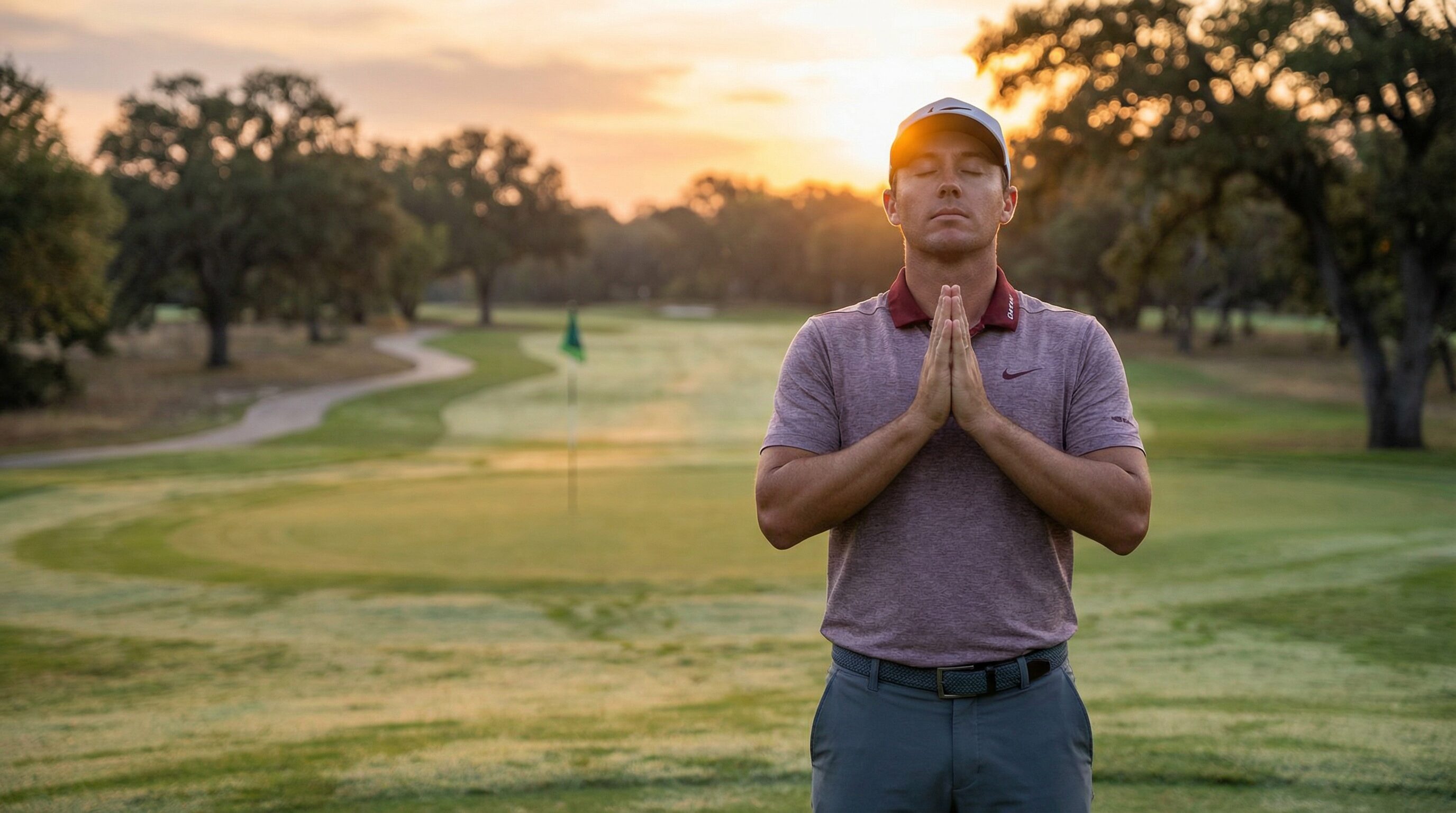
It’s a scenario every golfer knows intimately: you’ve just striped a perfect drive down the middle of the fairway, only to follow it up with a chunked iron shot that barely advances the ball. Frustration mounts, your focus shatters, and the rest of the hole—and perhaps the round—unravels. While we often blame our swing mechanics for these inconsistencies, the true culprit frequently lies between our ears. Research consistently shows that the mental game accounts for a staggering 70-90% of performance in golf . Yet, despite its monumental importance, studies reveal that only about 14% of golfers regularly practice their mental skills .
This article is designed to change that. We will explore the critical role of psychology in golf, break down the most common mental errors that sabotage your scores, and provide you with professional-grade techniques and practical drills to build an unshakeable mental game. By the end, you will have a clear roadmap to not only lower your handicap but also to find more joy and resilience on the course.
Why the Mental Game is Your Most Important Club
In golf, a quiet mind is a powerful asset. Your mental and emotional state directly influences your physical capabilities. When you are calm, focused, and confident, your body is relaxed, and your swing can flow freely and naturally. Conversely, when you are anxious, angry, or distracted, your muscles tighten, your coordination suffers, and your swing mechanics break down. This isn’t just a feeling; it’s a physiological reality. Negative emotions trigger a fight-or-flight response, which is fundamentally at odds with the fine motor control required for a successful golf shot .
A 2025 systematic review on mental fatigue in golf further highlights this connection. The research found that prolonged mental exertion during a round directly leads to a decline in performance, affecting everything from driving distance and iron accuracy to, most significantly, putting . Every decision, every calculation, and every moment of frustration depletes your cognitive resources, making it harder to execute shots as the round progresses. Mastering the mental game is therefore not just about thinking positively; it’s about efficiently managing your mental energy.

The 5 Mental Mistakes Costing You Strokes (and How to Fix Them)
Based on extensive analysis of amateur golfers, sports psychologists have identified several recurring mental errors. Here are five of the most common, along with strategies to overcome them, adapted from the work of mental game coach David MacKenzie .
Mental Mistake Description The Fix 1. Analyzing Your Swing Constantly dissecting your mechanics on the course, trying to “fix” your swing mid-round. Trust the swing you brought. The course is for playing, the range is for practicing. Focus on your target and let your body execute. If you need a swing thought, use a simple rhythm cue like “one-two-three.” 2. Obsessing Over Score Tying your emotional state to your score on every hole, leading to a rollercoaster of feelings. Focus on the process, not the outcome. Your goal for each shot should be to execute your routine flawlessly. The score will take care of itself. 3. Negative Self-Talk Berating yourself after a bad shot, which lowers confidence and increases tension. Become your own best caddy. After a poor shot, offer yourself the same encouragement you would a friend. Develop a post-shot routine that involves acknowledging the feeling, taking a deep breath, and moving on. 4. Vague Targeting Aiming for a general area like “the fairway” or “the green” instead of a specific point. Pick the smallest possible target. Top professionals aim at incredibly precise spots, like a specific tree branch or a single blade of grass. This sharpens focus and improves accuracy. 5. Neglecting Your Routine Lacking a consistent pre-shot and post-shot routine, leading to inconsistent mental preparation and reaction. Make your routine your primary goal. A well-defined routine is your mental armor against pressure. It ensures you are committed to every shot and can handle any outcome.
Building an Unshakeable Mental Game: Pro-Level Techniques
Top professional golfers are masters of the mental game. They employ specific techniques to stay focused, confident, and resilient under immense pressure. Here are a few you can incorporate into your own game.
The Power of a “Pre-Shot Creation”
Instead of a rigid, robotic pre-shot routine, think of it as a “pre-shot creation.” This concept, inspired by the approach of players like Tiger Woods, reframes the process as an artistic and imaginative one . Rather than just going through the motions, you should feel the shot, engage your senses, and become genuinely interested in the unique puzzle each shot presents. This fosters a state of deep presence and curiosity, quieting the analytical mind.
Tiger Woods worked extensively with navy psychologist Dr. Jay Brunza early in his career, developing what he called “game training.” Woods emphasized the importance of bringing attention to “THIS SHOT in THIS moment” and described feeling the shot in his fingers rather than relying solely on visualization. At his best, Woods found a way to be immensely interested in each shot, playing from a position of curiosity rather than anxiety .

Mastering Your Mind: Awareness Over Control
One of the biggest paradoxes in golf psychology is that trying to control your thoughts often backfires. Telling yourself “don’t hit it in the water” only makes the water a more prominent feature in your mind . The key is not to suppress negative thoughts but to change your relationship with them through mindfulness and awareness. Acknowledge the thought without judgment, and then gently guide your focus back to your target and your breathing. The best players don’t have fewer negative thoughts; they are simply more skilled at not letting them take over.
Research shows that the average person has approximately 70,000 thoughts per day, with more than two-thirds being negative . The difference between elite golfers and amateurs is not the quantity of negative thoughts but how they respond to them. Elite players have developed the skill of awareness—noticing thoughts without becoming entangled in them—allowing the thoughts to pass like clouds in the sky.
Breathe Like a Champion
Breathing is one of the most powerful and simple tools for managing your physiological state. When you feel pressure mounting, your breathing becomes shallow and rapid. By consciously slowing it down, you can signal to your nervous system that it’s time to calm down. A popular and effective technique is Box Breathing:
1.Inhale slowly for a count of four.
2.Hold your breath for a count of four.
3.Exhale slowly for a count of four.
4.Hold your breath for a count of four.
Repeating this cycle just a few times can significantly lower your heart rate and reduce muscle tension, allowing you to approach the shot from a state of calm focus .
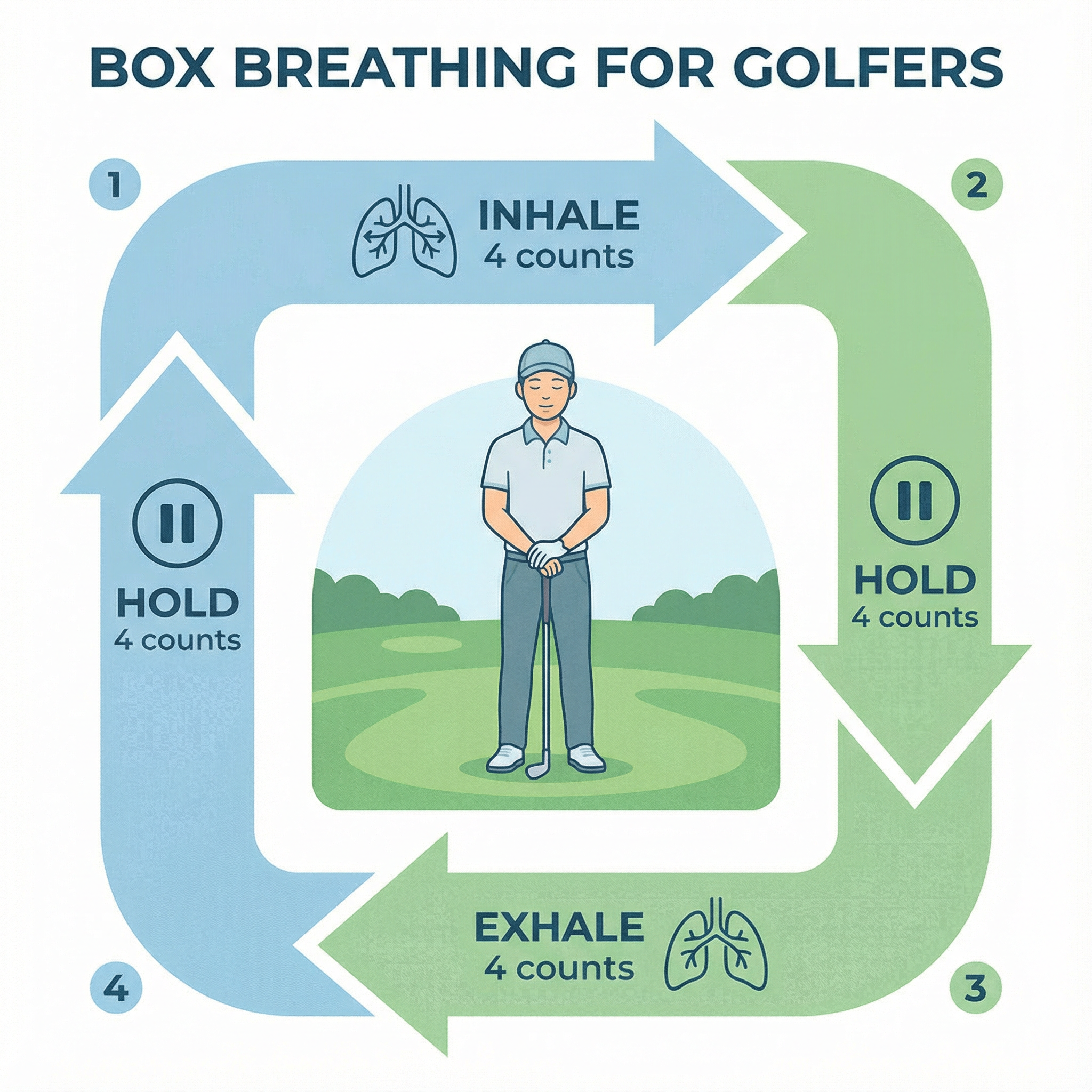
The Science Behind Mental Training
Recent research validates what professional golfers have known intuitively for decades. A brain training study conducted with UCLA Golf demonstrated remarkable results: participants increased their greens in regulation by 12% and decreased three-putts per round by 9.7%. Perhaps most impressively, these improvements were sustained eight weeks after the training concluded . This demonstrates that mental skills, like physical skills, can be trained and improved with consistent practice.
A 2024 neuroscience study revealed that expert golfers exhibit distinct brain activity patterns during successful putts compared to unsuccessful ones. The research emphasized that mental preparation—not just physical technique—is the key differentiator between making and missing putts . This finding underscores the importance of developing a consistent mental routine before every shot.
Putting It Into Practice: Drills for a Stronger Mind
Improving your mental game requires consistent practice, just like your swing. Here are a few drills you can incorporate into your routine:
Pressure Putting Drill: Place three balls at 3, 6, and 9 feet from the hole. You must make all three in a row to complete the drill. If you miss, you start over. This simulates pressure and forces you to focus on your routine for each putt. As you improve, increase the difficulty by adding more balls or extending the distances.
Mindfulness on the Range: During your practice sessions, take a few moments between shots to simply be present. Feel the grip in your hands, notice the breeze, and listen to the sounds around you. This trains your ability to stay in the present moment, which is essential for peak performance on the course.
Post-Round Journaling: After each round, take five minutes to write down one thing you did well mentally and one mental challenge you faced. This builds self-awareness and helps you identify patterns in your mental game. Over time, you will notice recurring themes that you can address in your practice.
Target Practice with Consequences: On the range, pick a specific target for every shot—not just a general area. If you miss your target, perform a small penalty like five push-ups or hitting the next shot with your opposite hand. This adds consequences to your practice, making it more similar to on-course conditions where every shot matters.
Key Takeaways for Your Next Round
As you prepare for your next round, keep these fundamental principles in mind:
Trust over control. The more you try to consciously control your swing, the more tension you create. Trust the swing you have practiced and let your body execute naturally.
Process over outcome. Make your pre-shot routine your primary goal for every shot. When you focus on executing your process flawlessly, good scores follow naturally.
Awareness over suppression. You cannot eliminate negative thoughts, but you can change your relationship with them. Notice them, acknowledge them, and gently return your focus to the present moment.
Precision over generality. Always pick the smallest possible target. This sharpens your focus and gives your subconscious mind a clear objective.
Compassion over criticism. Treat yourself with the same kindness and encouragement you would offer a playing partner. Negative self-talk only compounds mistakes and drains your confidence.
Conclusion
The journey to mastering the mental game of golf is ongoing, but it is one of the most rewarding pursuits in the sport. By understanding the profound impact of your mind on your performance, recognizing common mental errors, and consistently practicing proven psychological techniques, you can unlock a new level of consistency, resilience, and enjoyment on the golf course. Remember, the next time you step onto the tee, your most powerful tool isn’t in your bag—it’s in your head. The difference between a good round and a great round often comes down to how well you manage the six inches between your ears.
Start small. Pick one technique from this article—perhaps developing a consistent pre-shot routine or practicing Box Breathing before important shots—and commit to it for your next three rounds. Track your progress, notice the changes, and gradually incorporate additional mental skills into your game. The mental game is not a quick fix, but a lifelong practice that will serve you well both on and off the course.
References
[1] NeuroTrackerX. (2023, December 1). Why Golf Performance is 90% Mental.
[2] McCarthy, P. (2025, November 8). The Mental Game of Golf: Pro Secrets You Haven’t Heard Before.
[3] Colorado Senior Golfers’ Association. The Brain Game – Spring Edition.
[4] McCarthy, P. (2025, November 8). The Mental Game of Golf: Pro Secrets You Haven’t Heard Before.
[5] Pan, X., et al. (2025). Mental fatigue in golf: A systematic review. PLOS ONE.
[7] Mind Caddie. (2025, November 9). Tiger Woods’ Mental Strategies.
[9] MyTPI. Mental Game: Brain Training Study With UCLA Golf.
[10] PsyPost. (2024, August 15). Golf: New neuroscience study reveals the secrets of better putting.
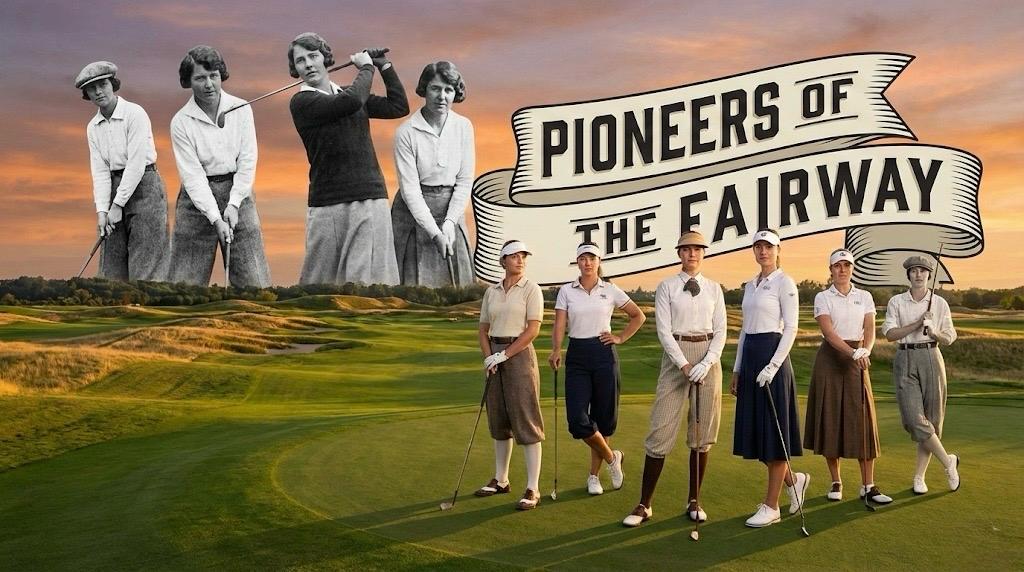
Golf, often perceived as a male-dominated sport, has seen numerous women defy norms, break barriers, and challenge the status quo. These pioneering women have not only made significant strides in the game but have also played a crucial role in reshaping the sport’s landscape. This article delves into the impressive careers of some of these groundbreaking women in golf, highlighting their incredible achievements and the enduring impact they’ve had on the sport.

Babe Didrikson Zaharias: The Woman Who Redefined Golf
Named “Woman Athlete of the Half Century” by the Associated Press in 1950, Babe Didrikson Zaharias is undoubtedly one of the most remarkable athletes in history. Her golfing career was nothing short of extraordinary.
Triumph Against the Odds
Despite facing resistance from the golfing establishment for her flamboyant personality and style of play, Zaharias refused to be sidelined. She won a staggering 10 LPGA major championships and 41 LPGA tour events, setting stage records and leaving an indelible mark on the sport.
Paving the Way for Others
Zaharias also co-founded the Ladies Professional Golf Association (LPGA), creating more opportunities for women in professional golf. Her tenacity and resilience inspired countless women to pursue their golfing aspirations, forever changing the face of the sport.

Nancy Lopez: A Beacon of Inspiration
Nancy Lopez is another trailblazing woman in golf. A child prodigy, Lopez first made waves in the golfing world when she won the New Mexico Women’s Amateur at just 12 years old.
.jpg)
A Stellar Career
Lopez turned professional at the age of 21 and quickly established herself as a dominant force in women’s golf. She won 48 LPGA Tour events, including three major championships, and was inducted into the World Golf Hall of Fame in 1987.
Inspiring Future Generations
Lopez’s impact extends far beyond her impressive record. She is widely respected for her sportsmanship, dedication, and spirit, and her success has inspired many young girls to take up golf.
Annika Sorenstam: Shattering Glass Ceilings
Annika Sorenstam is widely considered one of the greatest female golfers of all time. The Swedish star boasts an astounding 72 LPGA Tour victories, including 10 majors.
Making History
In 2003, Sorenstam made history by becoming the first woman in 58 years to compete in a PGA Tour event. This monumental moment not only put the spotlight on women’s golf but also challenged the gender divide in the sport.
Championing Women’s Golf
Post-retirement, Sorenstam has remained a powerful advocate for women’s golf. Through the Annika Foundation, she works to provide opportunities for young female golfers and promote the sport at the grassroots level.
Conclusion: The Legacy of These Trailblazing Women
The contributions of Zaharias, Lopez, and Sorenstam to golf are immeasurable. They’ve not only shattered records and broken barriers but also opened doors for countless women in the sport. Their legacies serve as a testament to the power of determination, talent, and hard work. They have reshaped the world of golf, proving that the fairway is no longer just a man’s domain.
These women have paved the way for the next generation of female golfers, who continue to push boundaries and redefine the sport. As we celebrate these pioneering women, we look forward to seeing more women rise, conquer, and leave their own mark on the fairways.
Today, women in golf continue to make strides, thanks in part to the trail blazed by these pioneering women. Let their stories inspire you to break barriers in your own field, whatever that may be. Because when it comes to achieving greatness, the most important shot in golf, as in life, is the next one.
Blog
Sustainability in Golf: The Future of Eco-Friendly Greens
Read about the environmental impact of golf courses.

Golf, a sport often associated with pristine, manicured greens and lush landscapes, isn’t historically perceived as eco-friendly. However, with growing concerns about climate change and sustainability, the golf industry is steadily transitioning towards more sustainable practices. This article will explore how golf courses around the world are becoming greener and more eco-friendly while maintaining their appeal to golf enthusiasts.
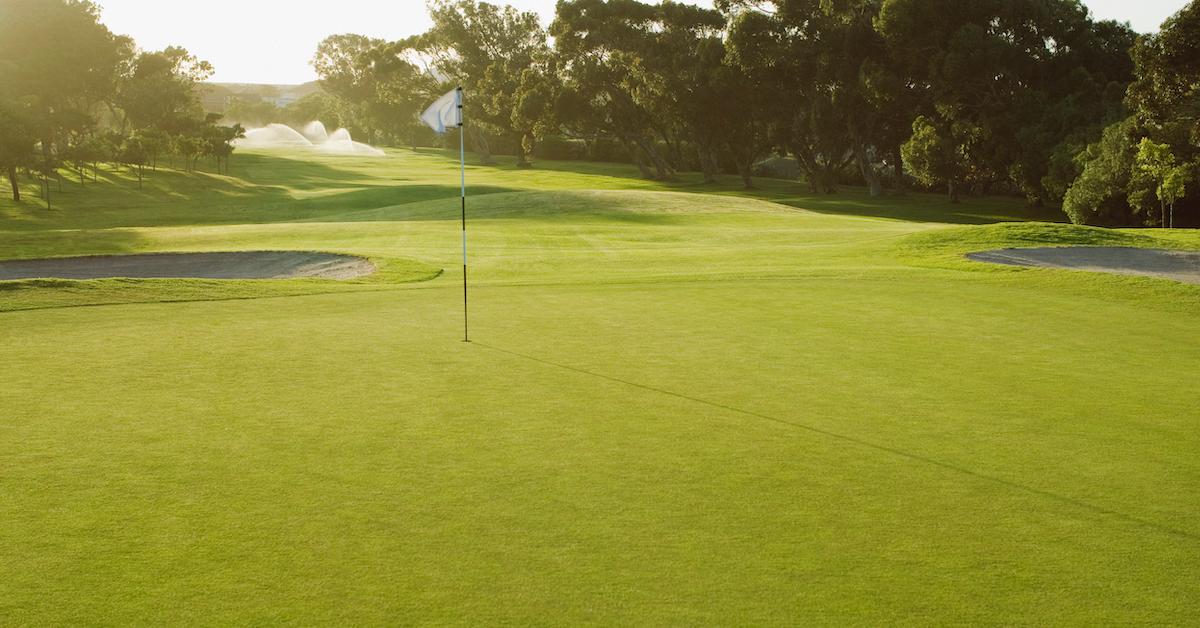
The Environmental Impact of Golf Courses
Golf courses traditionally use extensive resources, including water, pesticides, and fertilizers, which can have detrimental effects on the environment.
-
-
- Water Usage: Maintaining the verdant landscapes of a golf course requires enormous amounts of water. This is particularly concerning in regions where water scarcity is a significant issue.
- Pesticides and Fertilizers: To keep golf courses lush and free of pests, large amounts of chemicals are often used. These substances can seep into the ground, polluting water sources and harming local wildlife.
- Habitat Disruption: Golf courses often displace natural habitats, upsetting local ecosystems and reducing biodiversity.
-

Green Initiatives in Golf: Sustainability on the Fairways
Recognizing the environmental impact, many golf courses are now implementing sustainable practices to reduce their ecological footprint.

Water Conservation
Water conservation is a significant focus in eco-friendly golf course design. Methods employed include:
-
-
- Recycled Water: Many golf courses are now using recycled water or rainwater for irrigation, significantly reducing the use of freshwater resources.
- Drought-resistant Grass: Some courses are opting for drought-resistant varieties of grass that require less watering.
- Irrigation Technology: Advanced irrigation systems can efficiently distribute water, minimizing waste.
-

Reducing Chemical Usage
Reducing the use of harmful chemicals is another crucial step towards sustainability in golf. This can be achieved through:
-
-
- Organic Fertilizers and Pesticides: Many golf courses are switching to organic alternatives, which are less harmful to the environment.
- Integrated Pest Management: This approach focuses on long-term prevention of pests through biological control and habitat manipulation, reducing the need for chemical pesticides.
-

Preserving Local Habitats
Golf courses are increasingly being designed to coexist harmoniously with local ecosystems. This involves:
-
-
- Preserving Natural Features: Instead of altering the landscape to fit the course, designers are now incorporating existing natural features into the design.
- Creating Wildlife Habitats: Some golf courses are creating habitats for local wildlife, promoting biodiversity.
-
Case Studies: Sustainable Golf Courses Around the World
There are several golf courses worldwide that serve as excellent examples of sustainability in the industry.
- Pebble Beach Golf Links, USA: This renowned golf course uses recycled water for irrigation, reducing its freshwater use by 50%.
- St Andrews Links, Scotland: Known as the “Home of Golf”, St Andrews Links has implemented an extensive environmental management plan, including water conservation, habitat protection, and the use of organic fertilizers.
- Vineyard Golf Club, USA: This golf course in Massachusetts is one of the first to become fully organic, using only organic fertilizers and pesticides.
The Future of Sustainable Golf
The golf industry’s move towards sustainability is not just about eco-friendly practices on the course. It’s also about educating players and visitors about the importance of sustainability, thus promoting a culture of environmental consciousness.
While the transition to greener practices may be challenging, the benefits are immeasurable. Sustainable golf courses not only help protect the environment, but they can also enhance the playing experience, offering golfers the chance to play their favorite sport while surrounded by thriving, natural landscapes.
In conclusion, as awareness of environmental issues continues to grow, the question of “how green can the greens get?” is being answered by golf courses worldwide. Through innovative practices and a commitment to sustainability, the future of golf looks set to be greener than ever. As players, supporters, and enthusiasts of the sport, we can all contribute to this positive change by supporting golf courses that prioritize sustainability and by advocating for green practices within the golfing community.
-

 Product Review6 years ago
Product Review6 years agoThe Perfect Practice Putting Mat Review by Jason Tenzer
-

 Blog4 years ago
Blog4 years agoLoophole Rule Offers PGA Tour Pros a Mulligan
-

 Blog4 years ago
Blog4 years ago2021 Buyer’s Guide: The Top 10 Value Golf Balls For Distance & Feel
-

 Blog5 years ago
Blog5 years agoGolf Marriage Counselor
-

 Blog6 years ago
Blog6 years ago9 Biggest Chokes Of The Past Decade
-

 Product Review6 years ago
Product Review6 years agoTHE ADJUSTABLE IRONS: WALKING STICKS GOLF CLUBS
-

 Blog4 years ago
Blog4 years agoWhat Your Golf Clubs Say About You
-

 Equipment6 years ago
Equipment6 years agoOHK Sports Interview by Jason Tenzer






